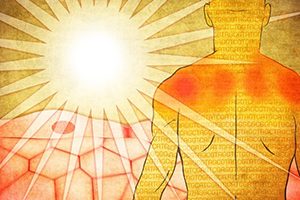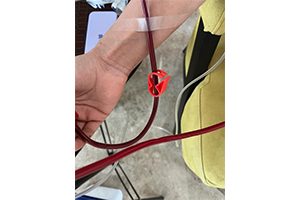Aging - A disease or a risk factor ?
Can it be slowed down ?















- Enhanced Detoxification: Ozone therapy improves the body’s ability to detoxify, removing harmful toxins that can accelerate aging.
- Improved Metabolic Health: The dietary intervention component encourages a nutrient-rich diet that supports metabolic health, crucial for delaying aging processes.
- Antioxidant Support: An antioxidant mix helps combat oxidative stress, one of the primary mechanisms of aging.
- Cellular and Molecular Targeting: Personalized Sirolimus titration aims to inhibit the mTOR pathway, offering a targeted approach to slowing cellular aging.
References
1. Mander BA, Winer JR, Walker MP. Sleep and Human Aging. Neuron. 2017 Apr 5;94(1):19-36. doi: 10.1016/j.neuron.2017.02.004. Review. PubMed PMID: 28384471; PubMed Central PMCID: PMC5810920.
2. Hersant H, Grossberg G. The Ketogenic Diet and Alzheimer’s Disease. J Nutr Health Aging. 2022;26(6):606-614. doi: 10.1007/s12603-022-1807-7. Review. PubMed PMID: 35718870.
3. Salminen A, Kaarniranta K, Kauppinen A. Photoaging: UV radiation-induced inflammation and immunosuppression accelerate the aging process in the skin. Inflamm Res. 2022 Aug;71(7-8):817-831. doi: 10.1007/s00011-022-01598-8. Epub 2022 Jun 24. Review. PubMed PMID: 35748903; PubMed Central PMCID: PMC9307547.
4. Liu JK. Antiaging agents: safe interventions to slow aging and healthy life span extension. Nat Prod Bioprospect. 2022 May 9;12(1):18. doi: 10.1007/s13659-022-00339-y. Review. PubMed PMID: 35534591; PubMed Central PMCID: PMC9086005.
5. Vasim I, Majeed CN, DeBoer MD. Intermittent Fasting and Metabolic Health. Nutrients. 2022 Jan 31;14(3). doi: 10.3390/nu14030631. Review. PubMed PMID: 35276989; PubMed Central PMCID: PMC8839325.
6. Li Z, Zhang Z, Ren Y, Wang Y, Fang J, Yue H, Ma S, Guan F. Aging and age-related diseases: from mechanisms to therapeutic strategies. Biogerontology. 2021 Apr;22(2):165-187. doi: 10.1007/s10522-021-09910-5. Epub 2021 Jan 27. Review. PubMed PMID: 33502634; PubMed Central PMCID: PMC7838467.
7. Li Z, You Y, Griffin N, Feng J, Shan F. Low-dose naltrexone (LDN): A promising treatment in immune-related diseases and cancer therapy. Int Immunopharmacol. 2018 Aug;61:178-184. doi: 10.1016/j.intimp.2018.05.020. Epub 2018 Jun 7. Review. PubMed PMID: 29885638.
8. Metyas S, Chen CL, Yeter K, Solyman J, Arkfeld DG. Low Dose Naltrexone in the Treatment of Fibromyalgia. Curr Rheumatol Rev. 2018;14(2):177-180. doi: 10.2174/1573397113666170321120329. PubMed PMID: 28325149.
9. Klimova B, Novotny M, Kuca K. Anti-Aging Drugs – Prospect of Longer Life?. Curr Med Chem. 2018;25(17):1946-1953. doi: 10.2174/0929867325666171129215251. Review. PubMed PMID: 29189123.
10. Patterson RE, Sears DD. Metabolic Effects of Intermittent Fasting. Annu Rev Nutr. 2017 Aug 21;37:371-393. doi: 10.1146/annurev-nutr-071816-064634. Epub 2017 Jul 17. Review. PubMed PMID: 28715993.
11. Hamblin MR. Ultraviolet Irradiation of Blood: “The Cure That Time Forgot”?. Adv Exp Med Biol. 2017;996:295-309. doi: 10.1007/978-3-319-56017-5_25. Review. PubMed PMID: 29124710; PubMed Central PMCID: PMC6122858.
12. El-Sawalhi MM, Darwish HA, Mausouf MN, Shaheen AA. Modulation of age-related changes in oxidative stress markers and energy status in the rat heart and hippocampus: a significant role for ozone therapy. Cell Biochem Funct. 2013 Aug;31(6):518-25. doi: 10.1002/cbf.2930. Epub 2012 Nov 21. PubMed PMID: 23172693.
13. Di Paolo N, Gaggiotti E, Galli F. Extracorporeal blood oxygenation and ozonation: clinical and biological implications of ozone therapy. Redox Rep. 2005;10(3):121-30. doi: 10.1179/135100005X38888. Review. PubMed PMID: 16156950.
14. Di Paolo N, Bocci V, Garosi G, Borrelli E, Bravi A, Bruci A, Aldinucci C, Capotondo L. Extracorporeal blood oxygenation and ozonation (EBOO) in man. preliminary report. Int J Artif Organs. 2000 Feb;23(2):131-41. PubMed PMID: 10741810.
15. Kazimirov LI, Komarov NV, Gorbunov SN. [Effect of ultraviolet irradiation of the blood on the body (review of the literature)]. Khirurgiia (Mosk). 1987 Jan;(1):103-8. Review. PubMed PMID: 3550246.
